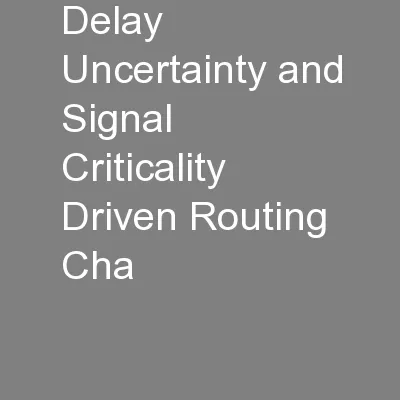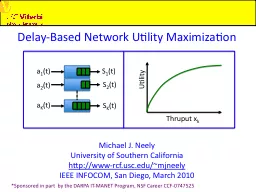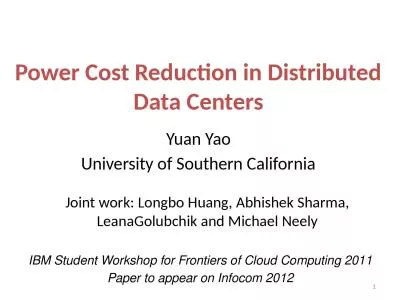PPT-Job Delay Analysis in Data Centers
Author : pamella-moone | Published Date : 2019-03-19
Weina Wang UIUC CMU Performance 2018 Joint work with Mor HarcholBalter Haotian Jiang Alan SchellerWolf and R Srikant Solving Limited ForkJoin Model Independent
Presentation Embed Code
Download Presentation
Download Presentation The PPT/PDF document "Job Delay Analysis in Data Centers" is the property of its rightful owner. Permission is granted to download and print the materials on this website for personal, non-commercial use only, and to display it on your personal computer provided you do not modify the materials and that you retain all copyright notices contained in the materials. By downloading content from our website, you accept the terms of this agreement.
Job Delay Analysis in Data Centers: Transcript
Download Rules Of Document
"Job Delay Analysis in Data Centers"The content belongs to its owner. You may download and print it for personal use, without modification, and keep all copyright notices. By downloading, you agree to these terms.
Related Documents














